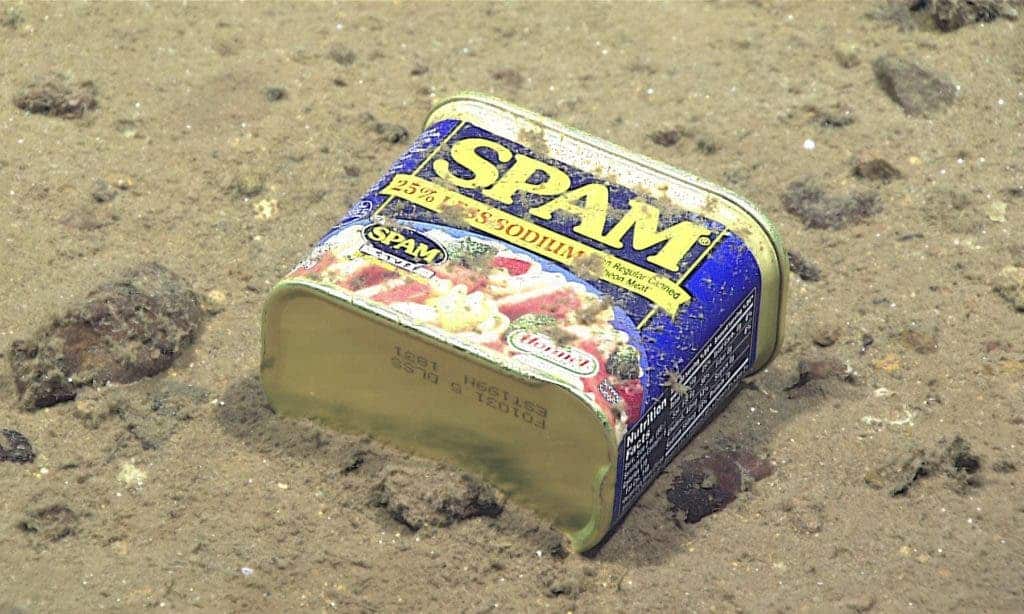Researchers report ‘extraordinary’ levels of pollution in deep trenches as chemicals banned all the way in the 70s still plague the oceans.

This container of Spam rests at 4,947 meters on the slopes of a canyon leading to the Sirena Deep in the Mariana trench. Photograph: Noaa Office of Ocean Exploration
A team led by Dr Alan Jamieson at the University of Newcastle sampled levels of pollutants in the fatty tissue of amphipods, a type of crustacean. Amphipods are crustaceans with no carapace and generally with laterally compressed bodies. They inhabit freshwater as well as saltwater, but Jamieson only focused on the amphipods inhabiting the deep parts of the Pacific Ocean, mostly around the Mariana Trench. The animals were taken from a depth of up to 10 km and across a distance of over 10 km.
Samples revealed that these small crustaceans were contaminated by pollution with incredibly high pollution levels — 50 times higher than crabs living in heavily polluted Chinese rivers.
“We still think of the deep ocean as being this remote and pristine realm, safe from human impact, but our research shows that, sadly, this could not be further from the truth,” said Alan Jamieson of Newcastle University in the UK, who led the research.
“The fact that we found such extraordinary levels of these pollutants really brings home the long-term, devastating impact that mankind is having on the planet,” he said.
Several contaminants were found, most notably polychlorinated biphenyls (PCBs) and polybrominated diphenyl ethers (PBDEs). They were once widely deployed as dielectric and coolant fluids in electrical appliances, carbonless copy paper and in heat transfer fluids. They’re still used today due to their longevity, though much less than in previous decades. But their longevity is not always a good thing. Because of PCBs’ environmental toxicity and classification as a persistent organic pollutant, PCB production was banned by the United States Congress in 1979 and by the Stockholm Convention on Persistent Organic Pollutants in 2001. These are long-lived pollutants and they seem to have made their way to all corners of the Earth.
It wasn’t completely unexpected to find such pollutants in the deeper parts of the ocean because decaying animals naturally go down — and when they go down, there’s no way for them to get back up again. The surprise was in the quantities they found, which were way, way higher than expected.
“The very bottom of the deep trenches like the Mariana are inhabited by incredibly efficient scavenging animals, like the 2cm-long amphipods we sampled, so any little bit of organic material that falls down, these guys turn up in huge numbers and devour it,” said Jamieson. “When it gets down into the trenches, there is nowhere else for it to go. The surprise was just how high the levels were – the contamination in the animals was sky high.”
Unfortunately, we don’t know exactly how this pollution affects ecosystems. Katherine Dafforn from the University of New South Wales in Australia, who was not involved in the study, told BBC that while the study “provided clear evidence that the deep ocean, rather than being remote, is highly connected to surface waters and has been exposed to significant concentrations of human-made pollutants,” the “toxic effects of these pollutants and their potential to biomagnify up the food chain still need to be tested.”
Journal Reference: Alan J. Jamieson, Tamas Malkocs, Stuart B. Piertney, Toyonobu Fujii & Zulin Zhang — Bioaccumulation of persistent organic pollutants in the deepest ocean fauna.









